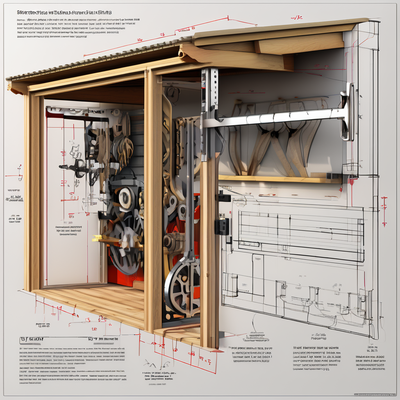Understanding Your Garage Door Mechanism

The Inner Workings
The garage door mechanism is a complex system designed to facilitate the smooth and efficient operation of your garage door. Here’s an overview of how it works:
- Springs: Garage doors typically use either torsion springs or extension springs to counterbalance the weight of the door. These springs help to lift and lower the door with minimal effort.
- Tracks: The garage door tracks guide the movement of the door as it opens and closes. The tracks are typically made of steel and are mounted to the walls and ceiling of the garage.
- Rollers: The rollers are attached to the sides of the garage door and move along the tracks as the door opens and closes. They help to reduce friction and ensure smooth operation.
- Opener: Most modern garage doors are equipped with an electric opener, which consists of a motorized unit and a drive mechanism. The opener is controlled by a remote or a wall-mounted switch and is responsible for lifting and lowering the door.
- Safety Sensors: Garage door mechanisms often include safety sensors located near the bottom of the door. These sensors detect obstructions in the door’s path and prevent it from closing if an object or person is detected.
- Cables: The cables are attached to the bottom of the door and help to lift and lower it. They work in conjunction with the springs to ensure smooth and balanced movement.
Overall, the garage door mechanism is a sophisticated system that relies on various components working together to provide safe and reliable operation. Regular maintenance and occasional repairs are essential to keep the mechanism functioning properly and prolong its lifespan.
